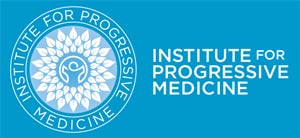It is common practice for physicians to replace street drugs with psychiatric drugs, so the drug abuser is never freed from drugs. He is merely switched from illegal drugs to legal drugs. In our practice we work to get people entirely off drugs. Whether they have been taking alcohol, sedatives, amphetamines, cocaine, alcohol, or combinations of drugs, our program, over time, gets them off everything.
Unfortunately, many doctors make a distinction between legal prescription drugs and illegal street drugs, as if the prescription drugs were beneficial. They are not. They just serve to keep the individual in a different drugged state, and to keep him from regaining control over his own life.
I have seen countless addicts whose anxiety was treated with a benzodiazepine, whose insomnia was treated with a sedative, whose depression was treated with an antidepressant. Often, since they may have all three problems, they are given all three types of medication at the same time. If the depression continues, as it often does because their life problems are not handled, yet another drug is added.
This is a deplorable situation. For the addict, there is no way out, only another variation on the endless drug cycle. Now in the clutches of the doctors prescriptions, he is no longer breaking the law, but he cannot get better, he cannot recover. Oftentimes, because the psychiatric drug is not working, he goes back to the street drug.
Hundreds of thousands of narcotic addicts have been treated with methadone, a long-acting, legally prescribed narcotic that is used indefinitely. Now there is another legal narcotic called Suboxone. The manufacturer promotes it for maintenance use, meaning for the life of the patient. Its major marketing point is that if it is dissolved and taken intravenously, it will throw the user into acute narcotic withdrawal. Now we see people who take methadone, or Suboxone, or heroin, depending on what is most available. Some of them also take Ritalin for attention-deficit disorder, Ativan for anxiety, and Prozac for depression. The number of drugs grows with the number of diagnoses.
Of the 3 million people in our nations prisons, many are there for drug-related offenses, either possession or sales of drugs, or crimes committed to get money for drugs. Once in prison, they may then receive psychiatric drugs.
In societys current drug treatment culture, the addict is never to be freed from drugs, always to be dependent on them, one way or another. This is the stance of the pharmaceutical companies, of the majority of the medical profession, and the political powers-that-be. It has never worked, and it can never work.
So what works? This pre-ordained failure of a system has to be changed to one whose intent is to thoroughly erase the need for a drug effect. The addicted individual needs to regain power over his life through education, to learn what it feels like to have a clear mind, to acquire a system of ethics that requires him to handle life without drugs and without crime.
This is not a pie-in-the-sky ideal. It is a goal achieved by many, who now have families, professions, and happiness. There are drug programs that offer this. Look for them.
Allan Sosin, MD
